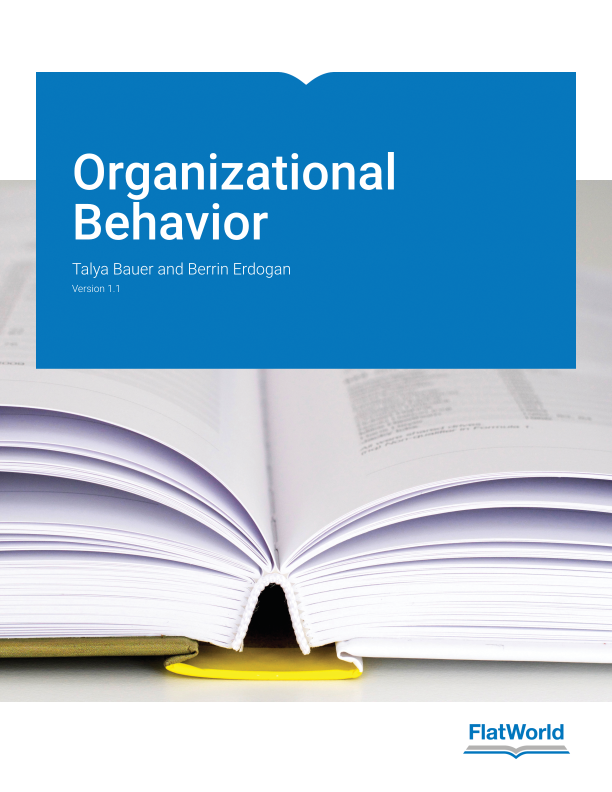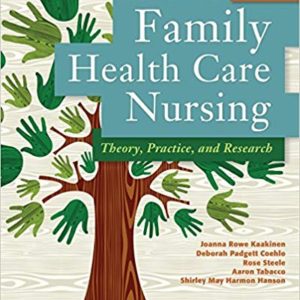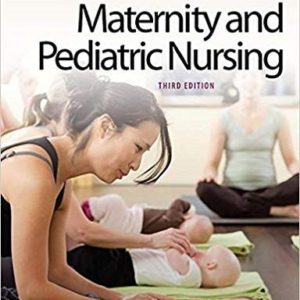Organizational behavior 1.1 Test Bank
$25
Description
Organizational Behavior, Version 1.1 Bauer & Erdogan Test Bank
Chapter 1 You must be logged in to post a review.
TRUE/FALSE
1. Flat World Knowledge was started by two textbook publishing industry veterans.
(True)
2. Flat World Knowledge is improving on the traditional publishing model but is not
innovating much.
(False)
3. So far, Flat World Knowledge is a start up without any external funding.
(False)
4. Most successful CEOs believe, “A company is only as good as the innovation it
creates.”
(False)
5. Current research suggests that the average employee today will change jobs 10
times in 20 years.
(True)
6. Organizational behavior is the systematic study and application of knowledge
about how individuals and groups act within the organizations where they work.
(True)
7. Emile is seated in a lecture where the instructor is discussing personality. He is
most likely in a sociology class.
(False)
8. The study of organizational behavior analyzes the three levels of individual,
organization, and society.
(False)
9. If I am examining how my manager’s behavior influences my work group, I am
looking at the organizational level of analysis in the organizational behavior
discipline.
(False)
10. Organizational behavior matters at three critical levels because it analyzes what
you care about, what employers care about, and what organizations care about.
(True)
11. Successful organizations tend to limit the amount of information shared by
maintaining a centralized structure.
(False)
12. Research shows that those organizations that are more effective limit the amount
of feedback they provide employees, limit the amount of information shared, and
allow roles to be ambiguous.
(False)
13. Those firms that are categorized as successful tend to provide employment
security, train employees, and reduce status differences.
(True)
14. Financially there is little incentive to attain a higher level degree.
(False)
15. The unemployment rate decreases as the level of education attained increases.
(True)
16. In general, the more training you have, the more financial success you will
achieve.
(True)
17. Journaling is a technique that helps you chart your progress as you learn new
skills.
(True)
18. The discipline of organizational behavior is simply common sense.
(False)
19. Michael is an auditory learner. He learns best by actually doing things and
learning from trial and error.
(False)
20. A kinesthetic learner is very likely to avoid taking once a week classes as they
require too much sitting and listening time.
(True)
21. Close-ended survey questions can be very time consuming to summarize and
very hard to interpret.
(False)
22. Glen is interested in finding out how effective a new incentive program might be
in an organization. He chooses two departments to focus upon in a company.
One department works under the incentive program, one does not. This is an
experimental design study.
(True)
23. Case studies suffer from questions as to whether the results of one organization
are generalizable to other situations and organizations.
(True)
24. Meta-analysis shows that the relationship between job satisfaction and job
performance is moderately strong.
(True)
25. Reliability refers to consistency of measurement, while validity assesses whether
the measurement does, indeed, measure what it is supposed to measure.
(True)
26. Most of management research addresses causation.
(False)
27. The federal government passed the Sarbanes-Oxley Act as a long-term solution
to dealing with unethical behavior.
(False)
28. Employee engagement has a significant impact on the corporate bottom line.
(True)
29. Research by Gallup indicates that only 20% of employees are disengaged from
their organization.
(False)
30. Moore’s Law suggests that computing power doubles every two years.
(True)
31. Because of information overload, some organizations, like Intel, have introduced
“No e-mail Fridays” as a way to address the issue.
(True)
32. Access to information has led to an increase in innovation and a “flattening of the
world.”
(True)
33. The triple bottom line refers to evaluating organizations against the three
performance criteria of social viability, economic viability, and demographic
viability.
(False)
34. One of the major challenges facing organizations today is how to reconcile the
accountability publicly owned firms have in generating wealth for shareholders
while attending to the triple bottom line.
(True)
35. In general terms, the American workforce is growing younger.
(False)
36. Outsourcing is becoming an increasingly common practice in many
organizations.
(True)
37. A “shamrock organization” is comprised of one-third regular employees, one-third
temporary employees, and one-third consultants and contractors.
(True)
38. Offshoring and the development of a shamrock organization structure challenges
organizational behavior to manage teams made up of employees of different
nationalities separated by culture, language, time and space.
(True)
39. The Millennial Generation has technology embedded in their lives so
organizational behavior has the challenge of managing people of different
generations who have different values with regard to teamwork, rewards, and
work-life balance.
(True)
40. Organizational behavior provides organizations the tools to address the
technological, societal, and cultural issues arising today to create an environment
that is mutually beneficial to the firm and its employees.
(True)
MULTIPLE CHOICE
Opening Section: College Textbook Revolution: The case of Flat World
Knowledge
41. The CEO of Flat World Knowledge believes:
a. the textbook industry is fine as it is.
b. textbook costs are not a major concern.
c. the traditional textbook industry model no longer makes sense.
d. that charging a high price for textbooks will lead to company growth.
(c) Medium/Analysis
42. The success of Flat World Knowledge is surprising because the textbook industry
is characterized by
a. Low profit margins.
b. Expensive textbooks.
c. Harmonious customer interactions.
d. Interesting and challenging textbooks.
(b) Easy/Comprehension
Section I: Understanding Organizational Behavior
43. According to the authors of Organizational Behavior, a company’s greatest asset
is
a. its product.
b. its financial resources.
c. its people.
d. its location.
(c) Easy/Knowledge
44. Maurice is enrolled in a career development class at his university. Which of the
following statements best reflects important themes in the course?
a. All students have common experiences and capabilities so an
organization’s career development activities can be standardized.
b. Learn as much as you can in as many areas as you can in college
because you will not learn much more throughout your worklife.
c. Once individuals choose their first job and the organization in which they
work, they make very few changes in either throughout the rest of their
worklives; so choose carefully.
d. Uniqueness in a career path is the norm, so the best prepared students
are able to diagnose situations, ask tough questions, evaluate answers
and act in effective and ethical manners.
(d) Difficult/Synthesis
45. Which of the following is a key level of analysis investigated in Organizational
Behavior
a. industry.
b. individual.
c. meta.
d. society.
(b) Easy/Knowledge
46. The systematic study and application of knowledge about how individuals and
groups act within the organizations where they work is
a. clinical psychology.
b. organizational behavior.
c. sociology.
d. economics.
(b) Easy/Knowledge
47. Sociology is
a. the systematic study of group and team processes.
b. the systematic study of the production, distribution and consumption of
goods and services.
c. the systematic study of the processes by which groups of people make
decisions.
d. the systematic study of the processes in the organization and workplace
that improve the performance and well being of people.
(a) Difficult/Synthesis
48. Manuel is studying both psychology and sociology this term. He is having a
difficult time dealing with the overlap of some of the topics in the course. To help
him focused on the relevant aspects of each course, he should keep in mind that
a. sociology is primarily focused on the individual; psychology on society.
b. psychology primarily looks at how individuals are influenced in groups;
sociology looks at aspects of the individual.
c. sociology focuses on mental processes and behavior of the individual in
society; psychology focuses on how individuals are influenced by groups.
d. psychology primarily focuses on mental process and behavior in the
individual; sociology on how individuals are influenced in groups.
(d) Difficult/Evaluation
49. Psychology is
a. the scientific study of mental processes and behaviors of the individual.
b. the systematic study of individual behavior in society.
c. the systematic study of the processes by which groups of people make
decisions.
d. the systematic study of how to improve the performance and well being of
individuals in the workplace.
(a) Difficult/Synthesis
50. Organizational behavior draws heavily on personality and motivation studies from
what other discipline?
a. psychology
b.





Reviews
There are no reviews yet.